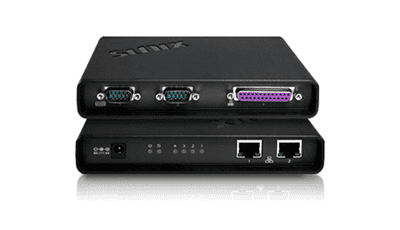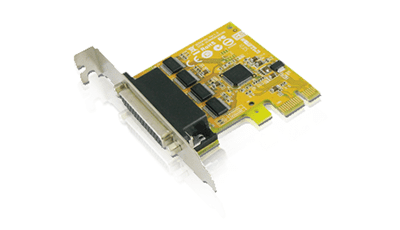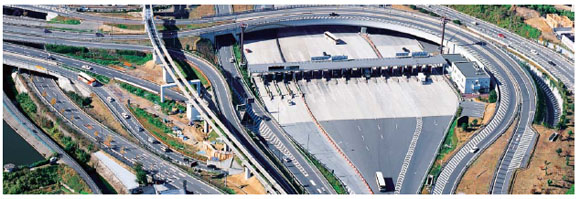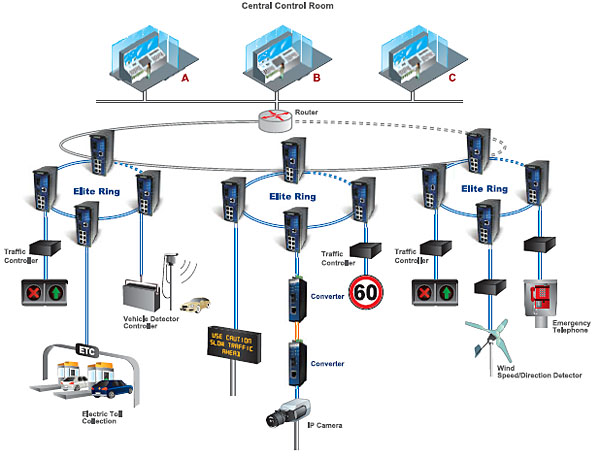| |
The total distance reaches to more than 800km. The two highways were interconnected with a freeway. Government authorities
want to make the traveling not only comfortable but with maximum road safety. The whole country has three main control centers
and the task was to put all control to “Central Control Center”, one of the main three. The network has to manage electrical
information, emergency stop markers, dynamic sign posting and collection of traffic data via sensors separated by a remote Digital I/
Os. This system can distinguish between different types of vehicles; measure the weight, the average speed, the traffic density, etc.
From a safety perspective, ETHERNET enables information from the multitude of sensors and signals which are fitted along the
Highways facing the extreme outdoor conditions, hence, increasing the complexity of the traffic control system further. The collected
information is transmitted via an ETHERNET network to a “Central Control Center” located in the controlling and monitoring
facility. |
| |
The most important target is to be ETHERNET availability without any failure, 24 hours a day, 7 days a week. The ETHERNET has to
be segmented in many smaller rings, and connecting the device boxes via fiber converters to the ETHERNET. The whole infrastructure
then needs to be connected to SDH (backbone core routers) via RSTP redundancy technique. |












